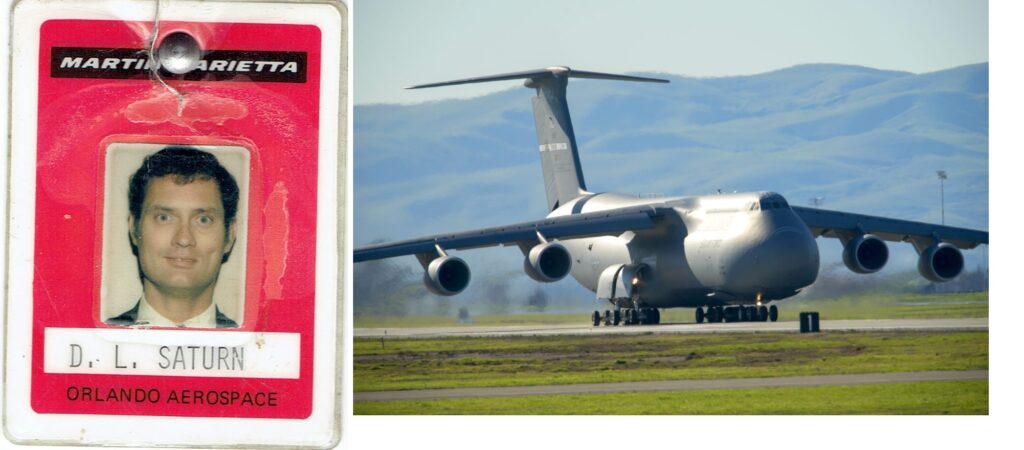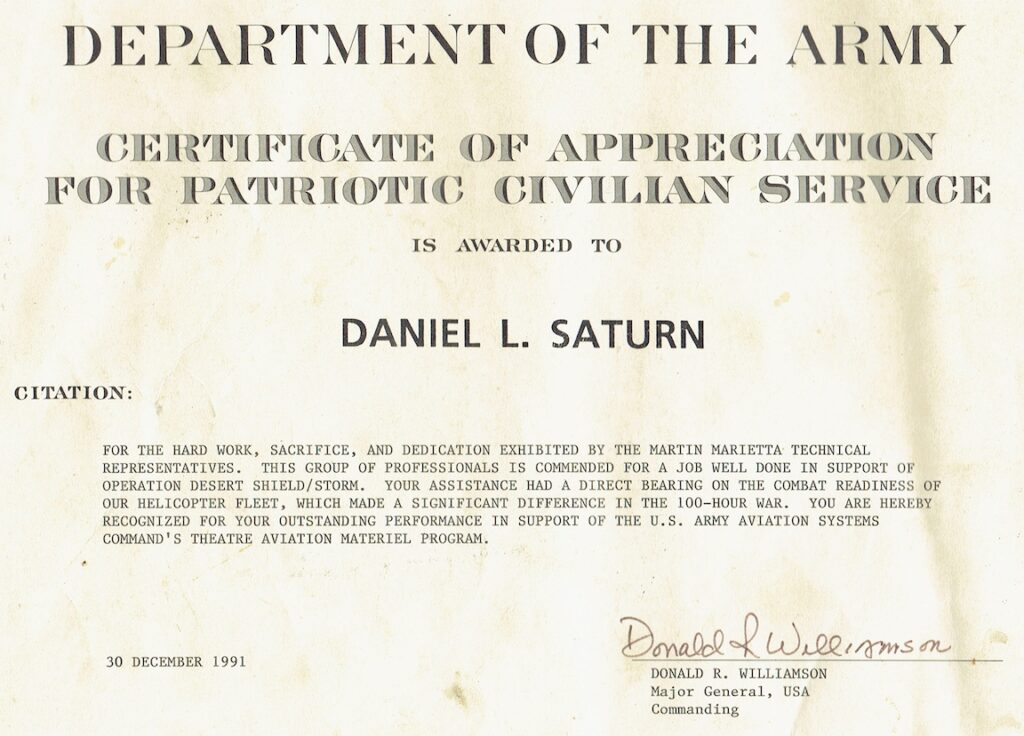I replaced the first AH-64 Apache attack helicopter systems engineer for the Lockheed Martian equipment, located in the nose.
We worked two shifts; and, I worked at night so that I could focus the infra-red sensors, optics, and laser in all those rotating parts.
I also worked on the frame that provided power and cool air to those parts; and, Lockheed Martin electronic boxes mounted in outside avionics bays.
I tested the Co-Pilot/Gunner sight, used for front seat viewing and operating sensors and weapons.
We only had one car for both shifts; and, I went everywhere possible.
We stayed at the Gulf Hotel (now the Sheraton) on the canal that separates Abu Dhabi from the mainland.
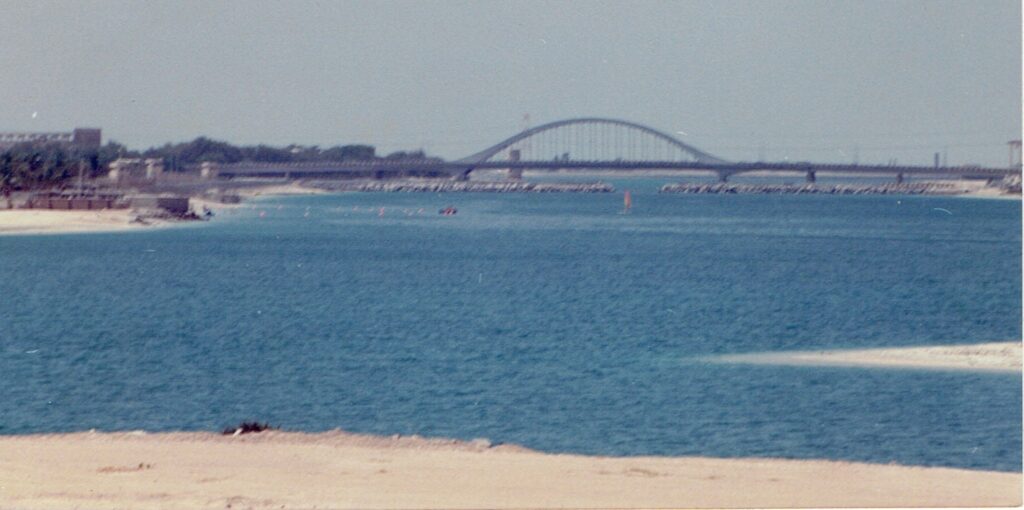
canal with Abu Dhabi to the left and the Arab peninsula on the right
One of our favorite places, was the Scheherazade grill.

I enjoyed being with the Arabs, learning their culture, trying to learn Arabic; but, most wanted to practice “American” instead of the “British” used in college and satellite networks.
Another of our favorites was a British store.
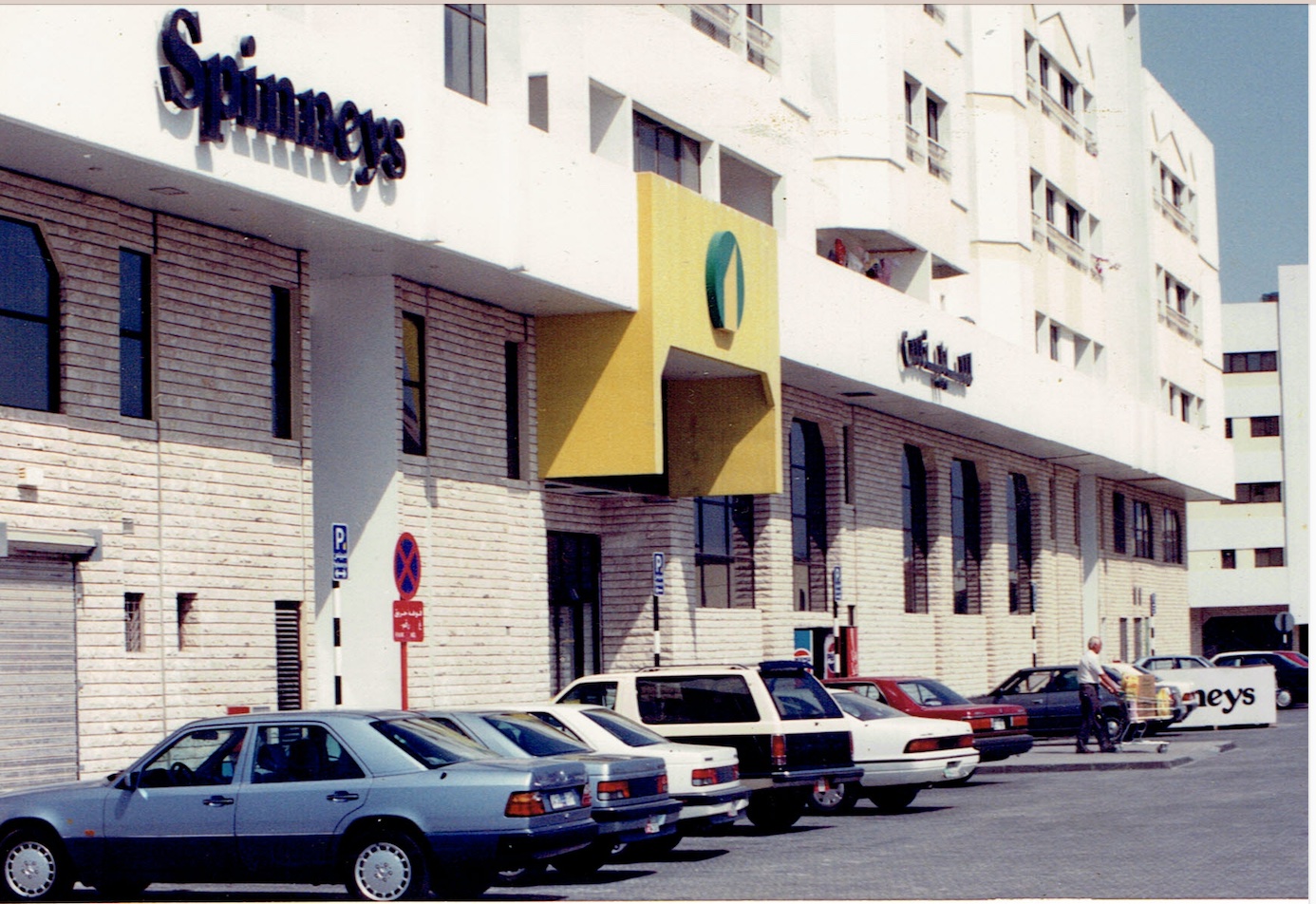
I remember in this store, when a local young woman was learning American from me. She was dressed moderately, without a black cover-up. From the look on the faces of her male escorts, it was clear I would be in trouble with them, if I did anything; but, just answer her questions.
If I was going to learn Arabic, it would have to be with a male Arab.
We also liked to visit the largest Abu Dhabi Souk (Bazar/Market) where anything from Afghan hats to Shawarmas (a local food of lamb meat sliced from a vertical rotisserie and put into a flour wrapper, like a burrito) were for sale.

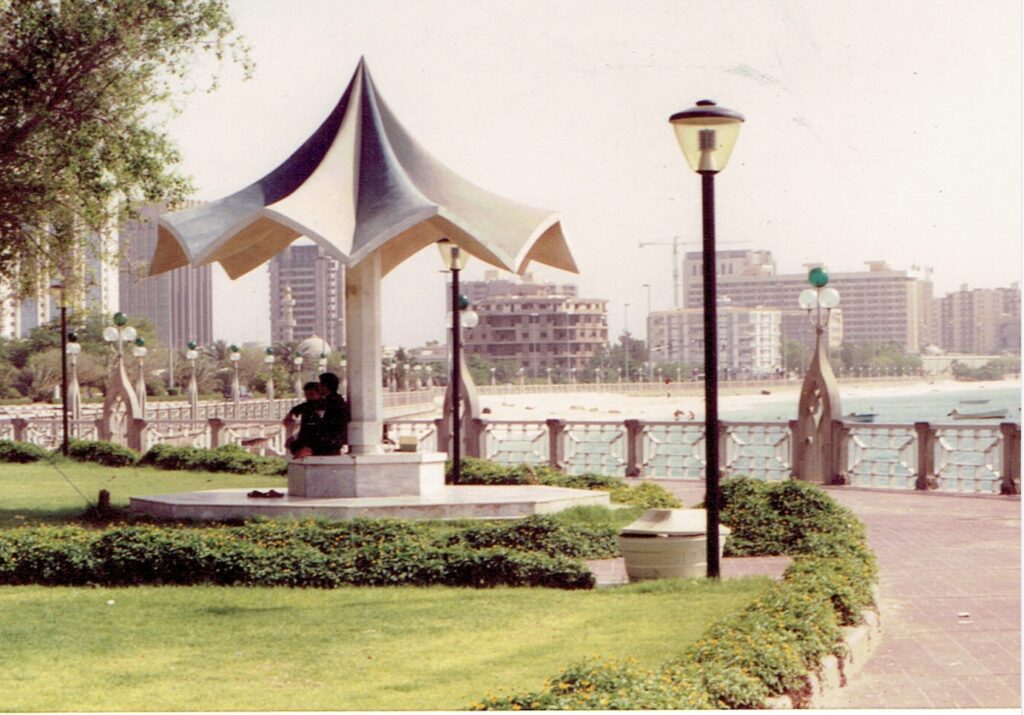
The walkway along the beach was lovely, even with an unusual sign on the beach.
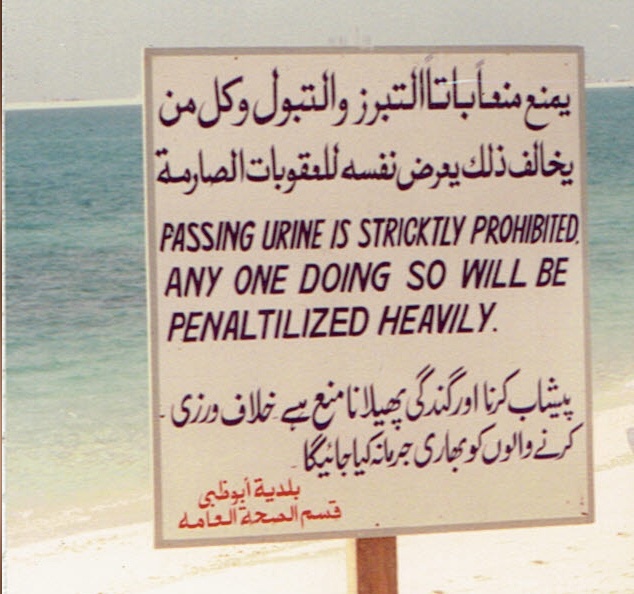
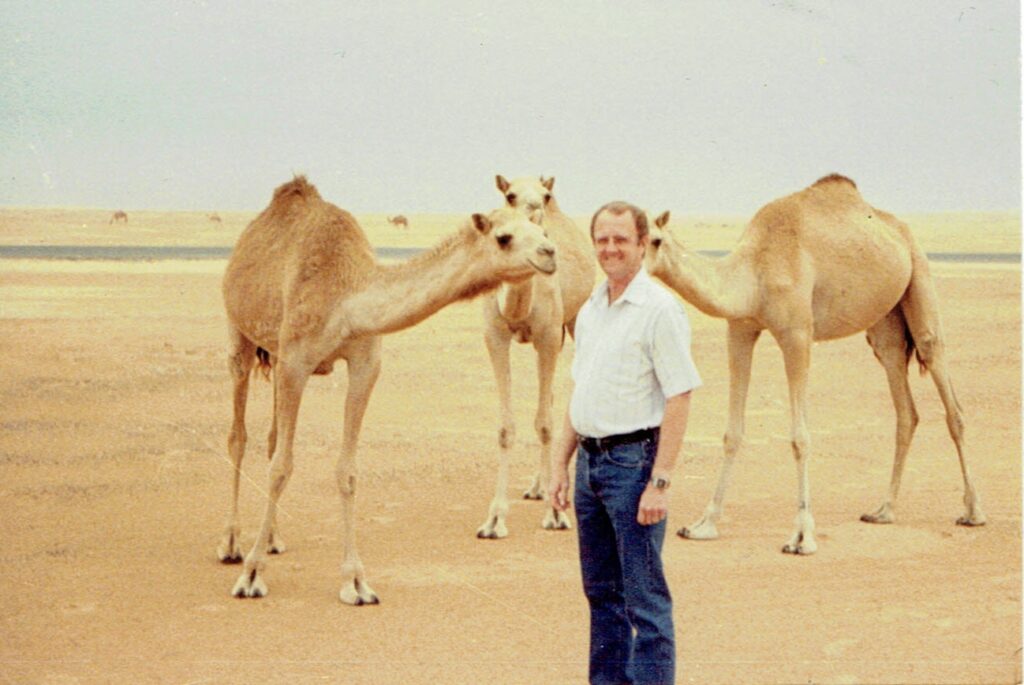
We saw our first free-roaming camels, near the road to Al Ain, in the hot central area of the UAE.
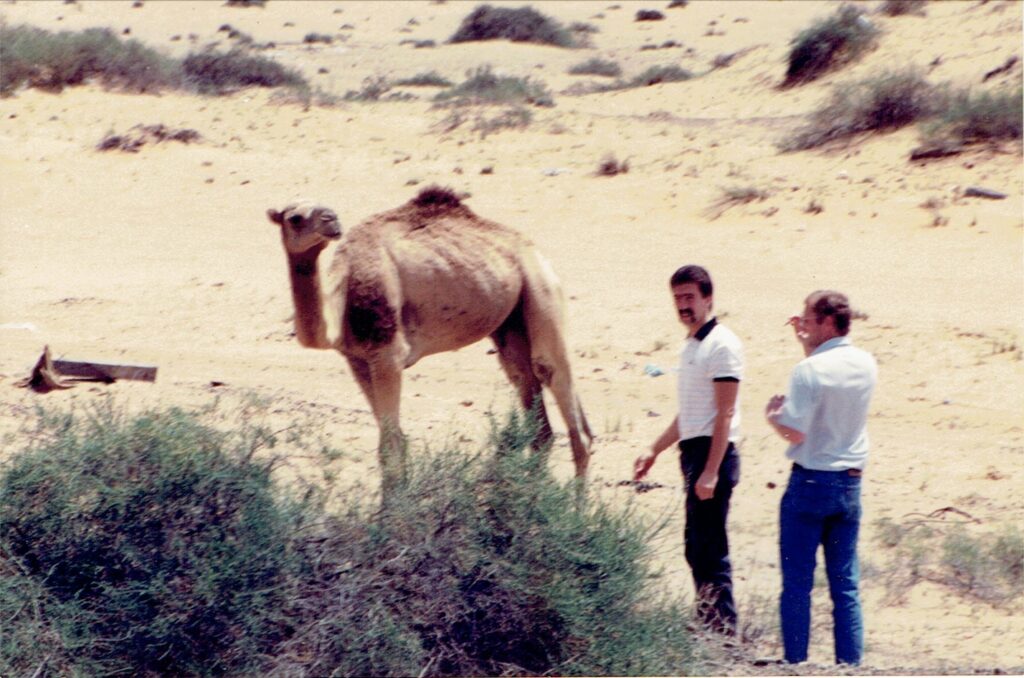
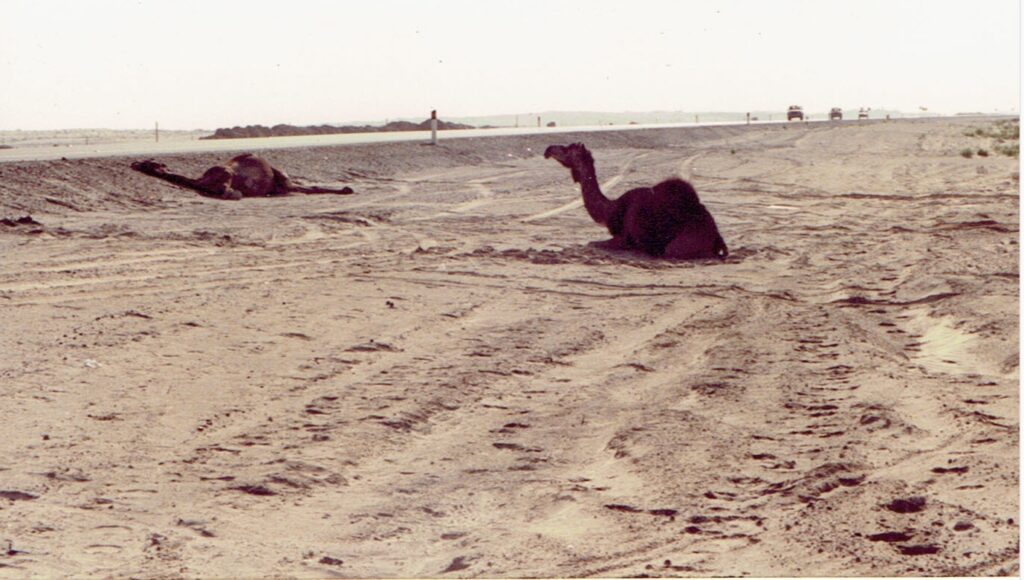
Not all of the camels were free-roaming anymore.
On the return trip, that dead camel was still there,
with its mourner.

In the middle of UAE’s Al Ain city, was a part of Oman.
Both nations are part of a patchwork, with bits of the UAE and Oman here and there; except, the really big mountains in the north that form the strait of Hormuz are almost entirely part of Oman.
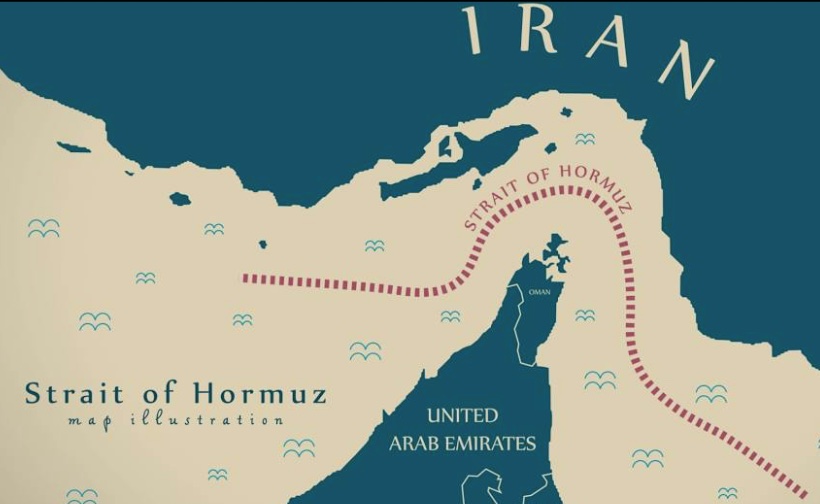
When it came time to leave, we put everything on big metal pallets for the C-5 and C-141.
Everyone flew home; except, for me and one other guy volunteering to insure those pallets arrived.
Half the time, I had the car to myself, and went on desert roads, up and down the Persian and Oman Gulf coasts from the Saudi border near Qatar, until the road ended or became impassible in really big mountains of the north. I traveled in Oman, stopping at gas stations and food sellers to learn a little about their customs, language, and local delicacies. At the “real” border, where the guards checked your papers, I had to turn around and return.
After I left on a C-5 chartered by the Army Aviation Systems Command (AVSCOM),
I was even given a citation, for helping them.
(At the time, the Major General or his staff evidently did not realize that Martin Marietta merged with Lockheed to become Lockheed Martin.)
The C-5 was built by Glenn Martin Aircraft at its factory, north of Atlanta, near Marietta, Georgia.
